WARNING: WE DO NOT ADVISE RUNNING WITH THE BULLS
The bull run is a dangerous activity that could lead to serious injury or death. Running with the bulls is a personal choice, and participation implies that you accept all risks involved.
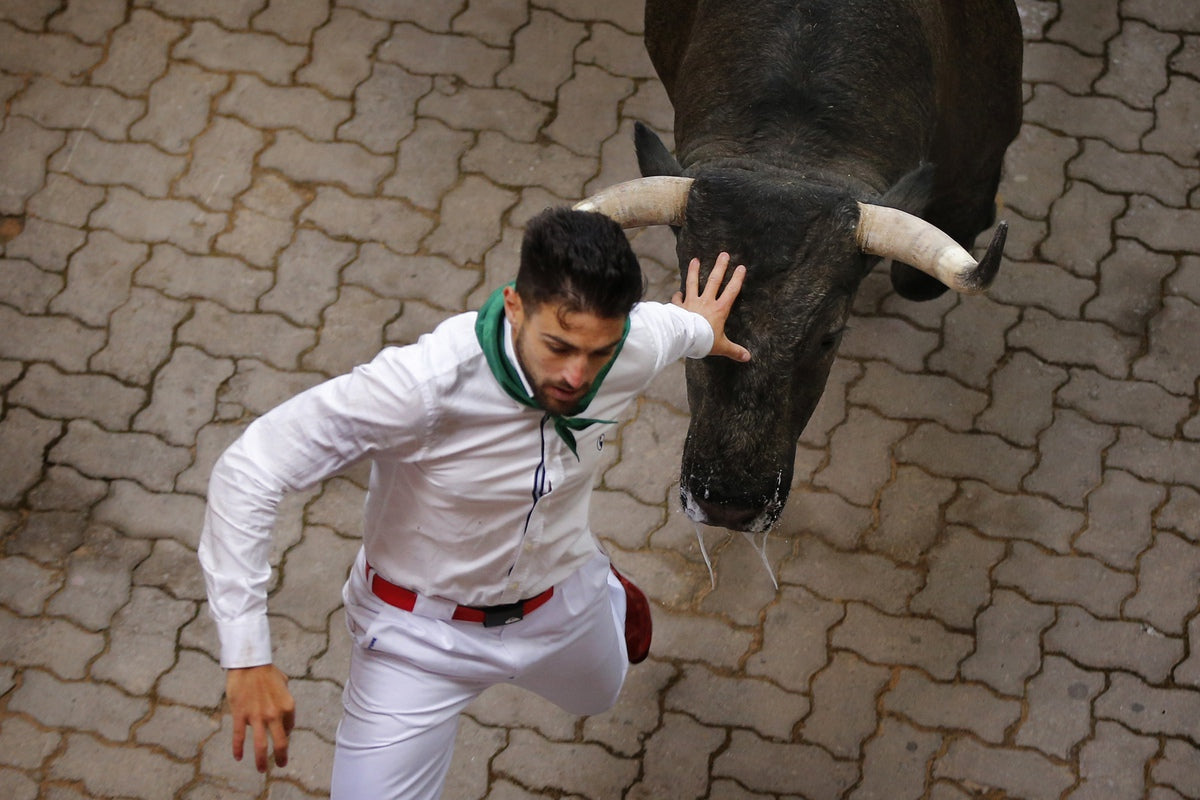
The Pamplona Bull Run Guide
You've heard about the Running of the Bulls festival for your entire life, and this July, you're finally going to experience it in person. Whether you want to run with the bulls or watch the bull run from a balcony, read on to prepare for the experience of a lifetime.
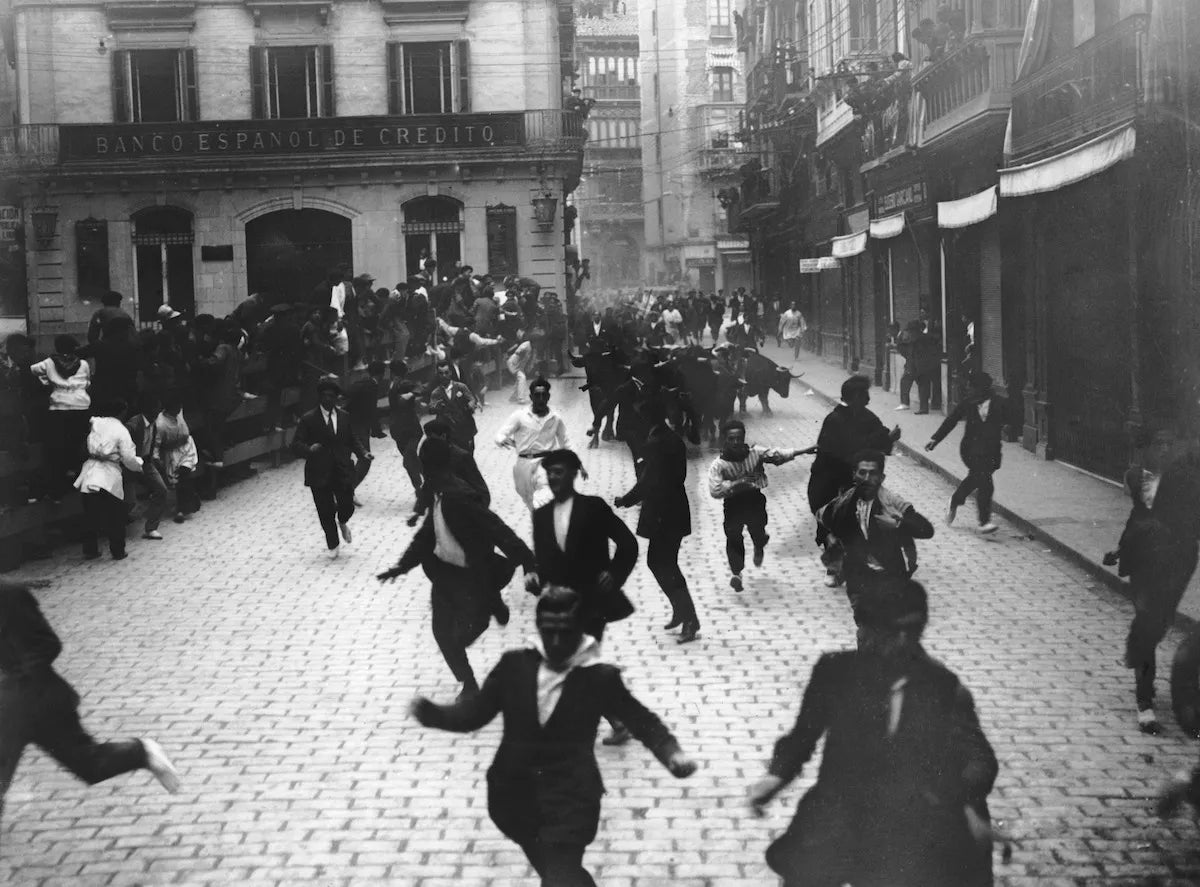
The History
Bulls runs, also known as encierros, are one of the most iconic traditions in Spain. Documented bull runs date back to as early as 1215 AD, at a time when bullfights were becoming an increasingly popular form of public entertainment. To prepare for these bullfights, cattle-herders needed to herd bulls from nearby farms to the arenas or city squares where the fights would take place; this usually meant blocking public use of the streets and herding the bulls directly through the city by foot. Eventually, thrill-seekers began running in front of the bulls as they were herded, and a tradition was born.

Today, bull runs happen all over Spain, but Pamplona's bull runs are by far the most famous, thanks to the influence of the celebrated American author Ernest Hemingway. Hemingway first visited the San Fermín festival in 1923, at the recommendation of a bed-and-breakfast owner in a nearby town in northern Spain. Soon after his travels, he published a novel set in Pamplona during the fiesta. The novel, titled The Sun Also Rises, quickly captured the imagination of readers all around the world. Hundreds of thousands of tourists have since flocked to Pamplona each July to run with the bulls and take part in the festivities.
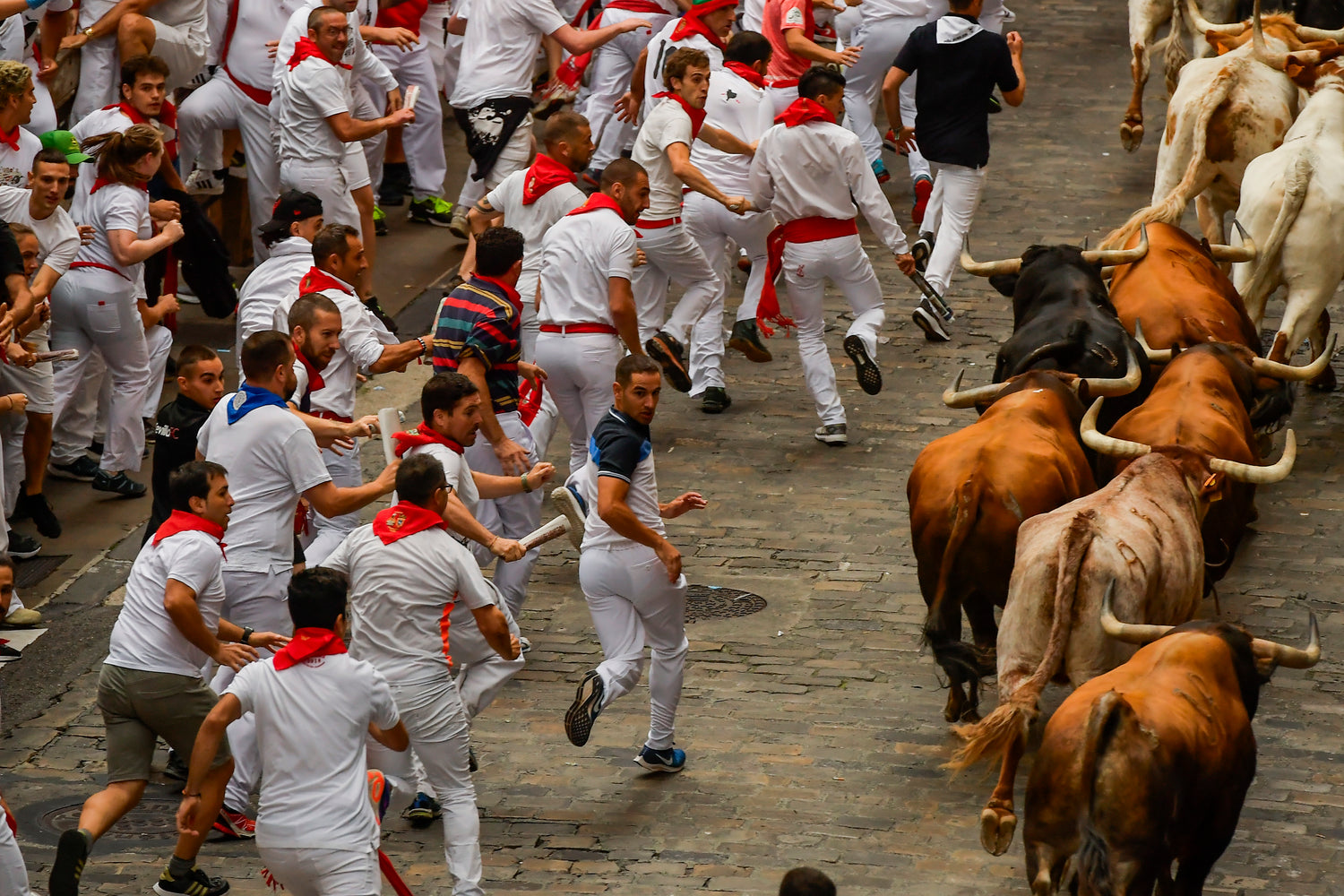
Bull Run Basics
Bull runs take place every year in Pamplona, Spain during the city's Running of the Bulls Fiesta, also called the festival of San Fermín or Los Sanfermines. Every morning between July 7th-July 14th at 8:00am, six fighting bulls and six steers are released from corrals at the edge of the city's Old Quarter. The bulls race down three main streets in a roughly 850 meter, or 0.5 mile, run. Finally, they arrive at the Plaza de Toros, where they run across the arena and into their corrals. It's completely free to run with the bulls, and anyone can participate - so long as they are able-bodied and willing to follow the rules.
Map of the Bull Run
Bulls are released from their corrals on Calle Santo Domingo, and they immediately begin running uphill. Then, they charge across the town square, Calle Mercaderes, and Calle Estafeta, before curving past the Telefónica building, running through the "callejón" corridor, and finally arriving in the Plaza de Toros.
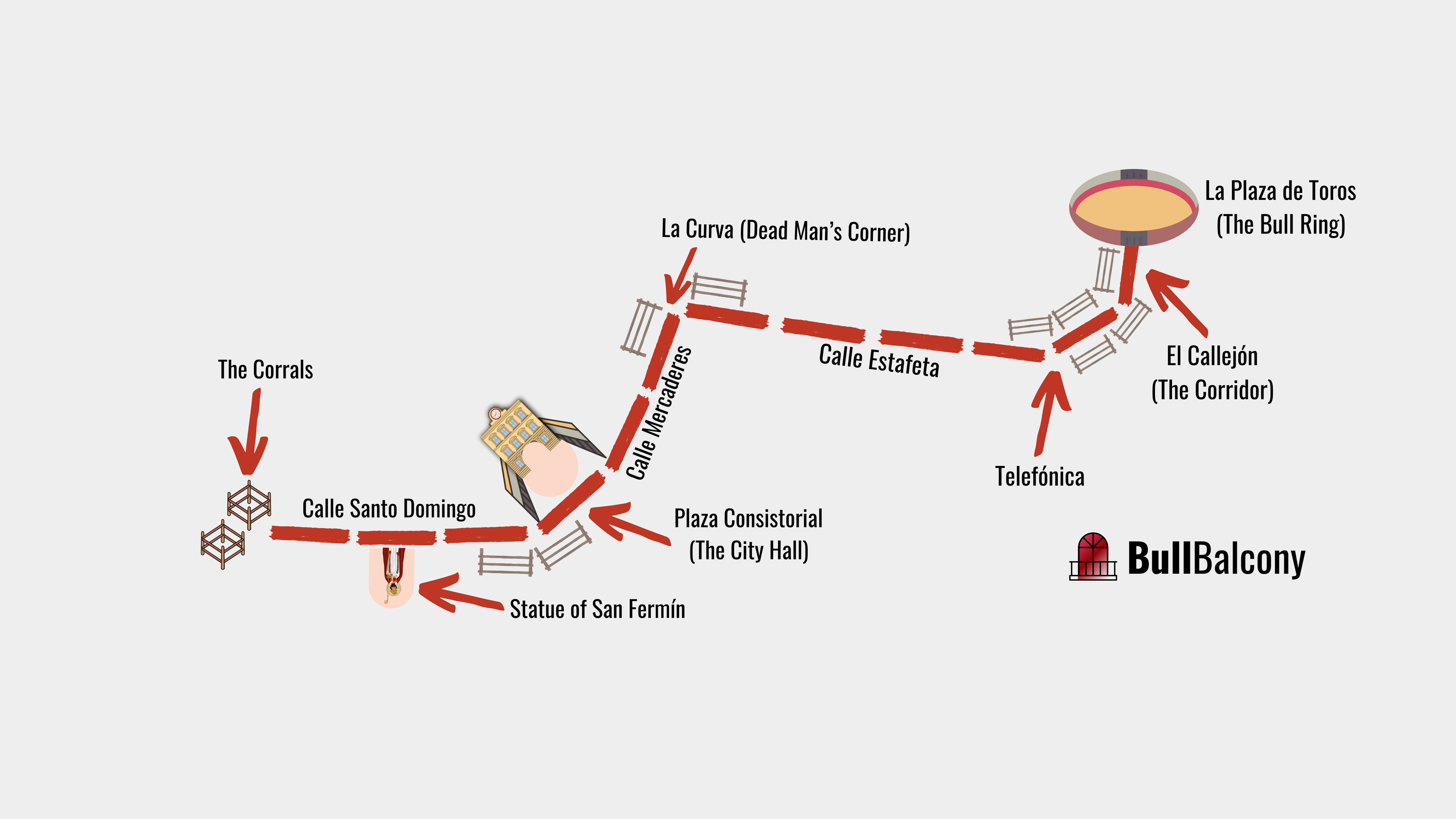
Video of a Bull Run
How to Watch the Bull Run
-
From a Balcony
Buy Balcony SpacesIf you watch the bull run from a balcony space purchased through BullBalcony, you'll get a front-row view directly overlooking the course. This is the best way to see the action from safety.
-
From the Bull Ring
Watch from the RingFor a cheaper alternative, buy tickets to watch the encierro directly from the ring. With this option, you'll watch the bulls run across the Plaza de Toros and into their corrals from a seat in the arena.
-
From a Barricade
You can try to find a free space at a barricade along the route, but we don't recommend this option, since you will be unlikely to see the bulls due to the crowds and the viewing angle. If you try your luck with this option, show up by around 4:30am, and check with locals and policemen to make sure you're in a legal spot.
-
With the Bulls
Book a LessonWe do not advise this option. However, if you accept the risk of running with the bulls, you can experience the tradition directly from the street. If you plan to run with the bulls, book a lesson with an expert to best prepare.
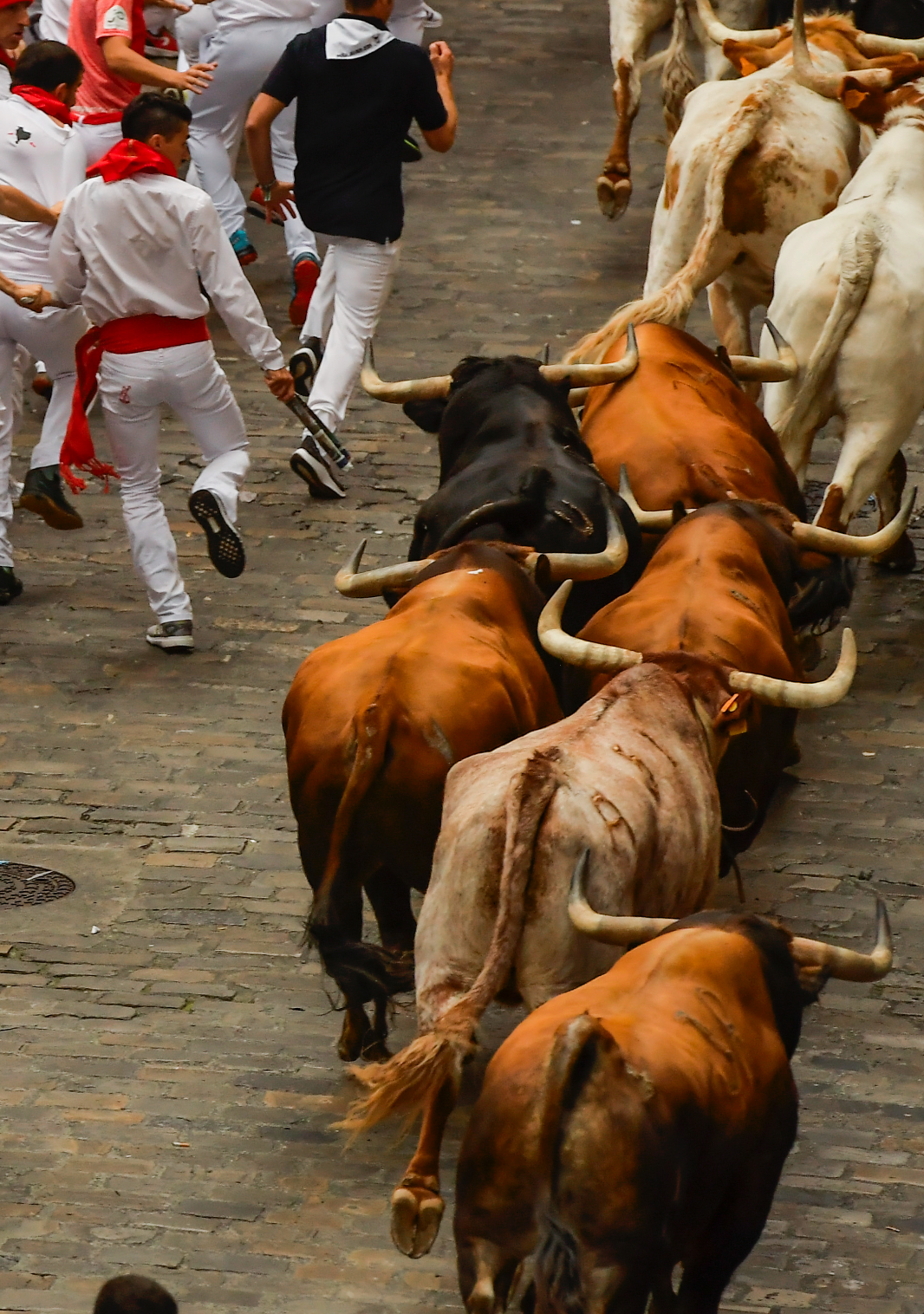
Preparing for the Bull Run
If you plan to run with the bulls, here are some tips to help you prepare:
- You don't need to register in advance to participate. You just need to be at the Plaza Consistorial on the morning of your run before the streets are closed. Plan to arrive by 7:00am.
- Choose your starting point along the route before you run - even before you arrive in Pamplona. Once you're in Pamplona, visit that starting point and familiarize yourself with the next 25-50 meters. Pay attention to the type of pavement on the street, note any curbs or sidewalks, and be aware of exactly where barricades will be set up.
- Invite your loved ones to book a balcony overlooking the segment you plan to run. Our team at BullBalcony can help you find the best places for your loved ones to watch from safety.
- Make sure you bring proper running attire. You're expected to wear running shoes, comfortable pants or joggers, and a shirt.
- If you choose to wear a traditional pañuelo (red bandana tied around your neck) and faja (red sash around your waist), be sure to tie the knot in a slipknot. This way, if a bull horn hooks your pañuelo or faja, you (probably) won't be dragged or choked.
Get to Know the Route
-
Calle Santo Domingo
This is a narrow, inclined street that marks the very start of the bull run. There are short, raised sidewalks that pose tripping hazards, and the curves along the street can make it difficult to see what's ahead. At this point of the bull run, bulls are running at maximum speed. Beginner bull-runners should avoid this street.
-
Calle Mercaderes
The beginning of this street is very wide compared to the rest of the bull run, and barricades on the right side allow runners to escape in case of an emergency. The middle of this street is ideal for beginner runners. However, the end of this street has the famous "Curva de Estafeta," which is a sharp turn that beginner runners should avoid.
-
Calle Estafeta
This is the long, straight stretch that leads runners from Calle Mercaderes to the bull ring. This street is another popular starting point for beginners, since the bulls run at a slower pace by this point along the route. This street is also ideal for runners who choose to "run on the horns" of the bulls, or between their horns, since the bulls are often slightly separated by this point.
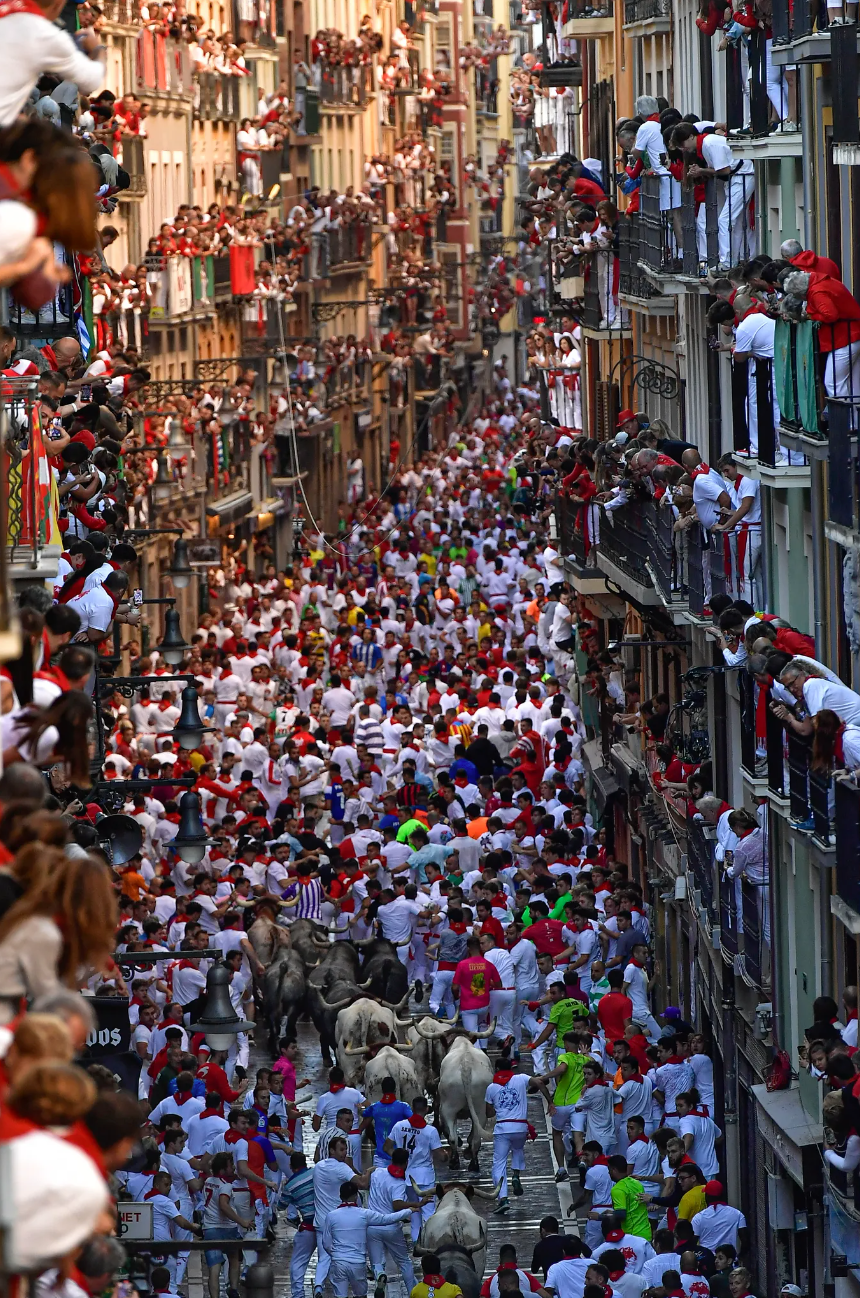
Bull Runner Rules
- If you are not lined up in either Plaza Consistorial or Calle Santo Domingo by the time police close the streets around 7:15am, you cannot run. Plan to line up between 7:00am-7:10am to make sure you're on time.
- Wear appropriate running attire, including running shoes, comfortable pants, and a shirt. Wearing sandals, dresses, or no shirt will get you thrown out of the bull run before it begins.
- Be sober and look sober. If you're covered in sangría stains from last night's bullfight, you may not be allowed to run.
- Don't bring any purses or backpacks. Since straps can get caught on barricades and bulls' horns, these items are not allowed on the run.
- Don't bring a camera. Taking pictures or videos can distract you from the fact that there are 600kg bulls on the street with you. If policemen catch you with a camera that's not your phone, you won't be allowed to run.
- Bring an ID. While policemen don't often check runners' ages, you must be 18 or older to run. Have an ID on you in case they ask. If you do get seriously injured, an ID will also help paramedics identify you.
- Be respectful of the bulls and runners. Don't touch or hold onto the bulls, and don't push people or stop in front of other runners.
- If you fall while running, stay down and cover your head with both hands. Trying to get up is the worst thing you can do in this situation; the bulls can detect movement, and they may target you if they see you getting up.

The Morning of the Run
The morning of the run, runners line up on Calle Santo Domingo or in the Plaza Consistorial by roughly 7:00am. For the next 30 or so minutes, police walk through the crowds, checking runners for proper attire and sobriety. Meanwhile, runners mingle and pray for their safety, singing a prayer to a statue of San Fermín. Then, when the police barricade restricting runners to the Plaza Consistorial breaks around 7:45am, runners jog to their chosen starting point along the route, warm up, and wait for the bulls.
At 8:00am, a rocket sounds to signal that the corral doors are open. Seconds later, another rocket sounds to signal that all the bulls have left the corrals and are charging down the route. Runners will try to keep up on the side, and the most daring and experienced runners will try to run "on the horns" of the bulls. As the bulls charge on, paramedics pull the injured from the streets to start emergency medical care.
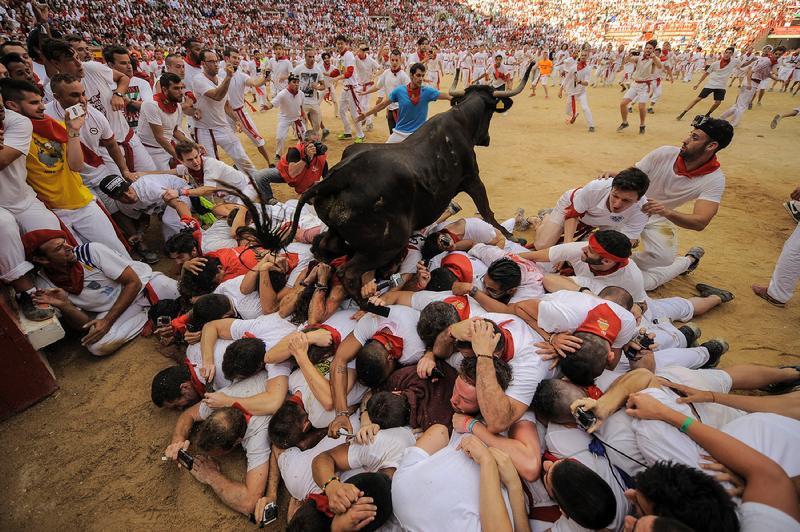
After a little more than two minutes, on average, the bulls make it into the Plaza de Toros, and a rocket sounds when the bulls are officially in their corrals. Then, another, lesser-known part of the encierro begins. During this event, six horned vaquillas are released into the bull ring, one by one. As the vaquillas charge out of their corrals, they jump over runners that lie flat on their stomachs, as pictured here. Throughout this event, the bravest runners will attempt to do flips over the vaquillas or test out matador cape-work, or passes. If you decide to participate in this event, do not touch the vaquillas. It is extremely looked down on. Going even further, like attempting to hold onto or wrestle bull, will get you beat up by locals and potentially arrested. Do not touch the vaquillas.

The Prayer to San Fermín
In the five minutes before the bull run begins, runners gather on Calle Santo Domingo to pray to the statue of San Fermín placed in a nook in the wall. While waving their rolled newspapers, runners sing, “A San Fermín pedimos, por ser nuestro patrón, nos guíe en el encierro, dándonos su bendición.” Then, in Basque, runners sing, "Entzun arren San Fermín, zu zaitugu patroi, zuzendu gure oinak, entzierro honton otoi." The prayer translates to "We ask San Fermín, for he is our patron, to guide us in the bull run, giving us his benediction." The prayer dates back to 1962, when a group of local runners started singing it before each morning run, and it has become one of the many timeless traditions of the Pamplona bull run.
Listen to the Prayer to San Fermín
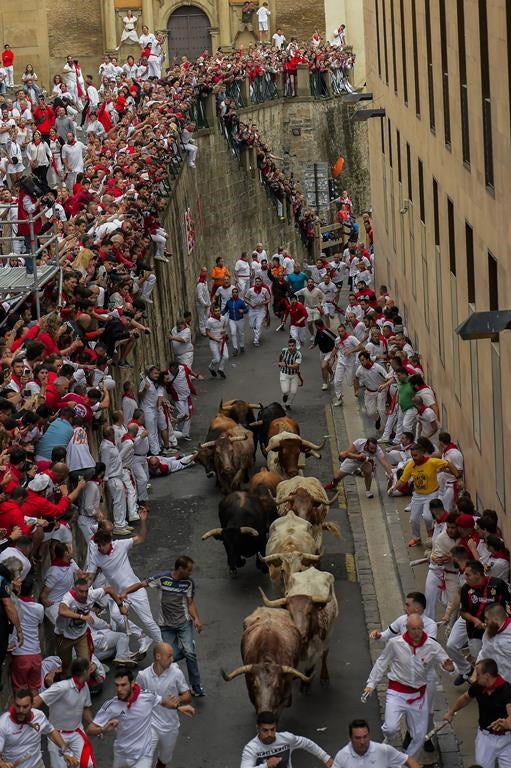
How fast is the bull run?
Bulls typically run the entire 850-meter bull run course in 2 to 5 minutes, with the average length being roughly 2 minutes and 15 seconds. This means that the bulls will run at a pace of roughly 6.5 meters per second. For reference, the average adult sprinting speed is between 15-20 km/h, which is roughly 4.8 meters per second. Between the density of the crowd and the speed of the bulls, even the best runners can only hope to keep up for around 10-15 seconds.
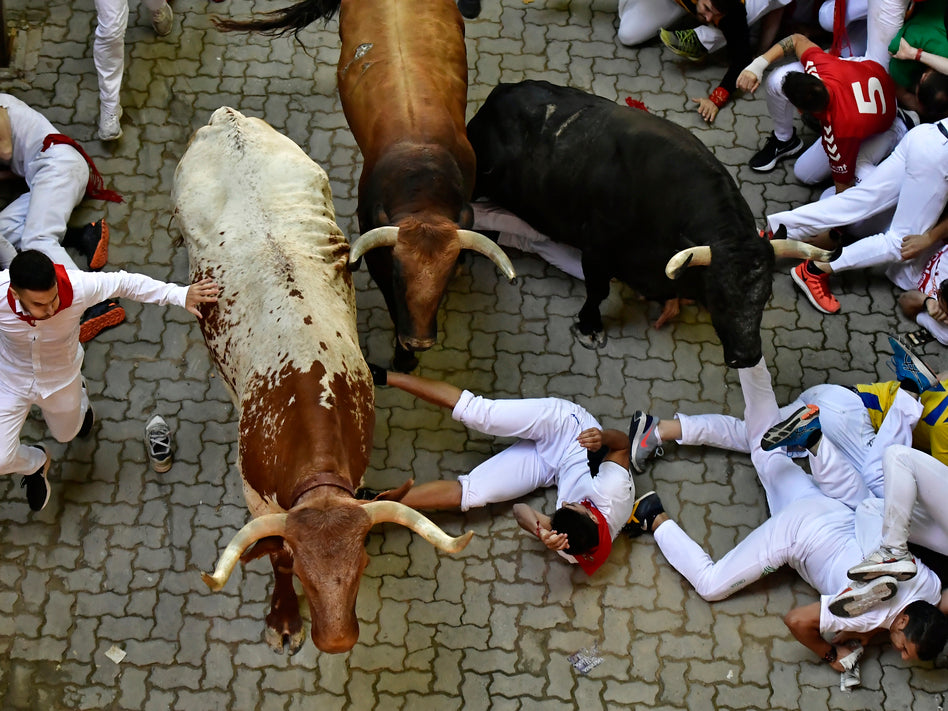
When are bull runs especially dangerous?
- Bulls become much more dangerous when they are separated from the rest of their herd and find themselves alone in a strange new environment - like the city streets of Pamplona. This happens when a bull leaves the corral late, when a bull slips on the run, or when a crowd of people cut a bull off from the herd. If you notice a bull becomes separated near you, especially if it stops running altogether or turns around, aim to get away as fast as possible.
- The dense crowds of runners on the opening dates (July 7th and 8th) and on weekends are also a huge risk. Dense crowds of runners can lead to pile ups of people who trip and fall, which in turn can lead to suffocation, repeated bull gorings, and other highly dangerous and inescapable situations. July 7th is generally considered the most dangerous day to run, since it is by far the most crowded day of the bull run. To get an idea of what the streets might look like while you run, see the many fallen runners in the picture to the right.
- When bulls from certain farms are running, you can expect that the run might be particularly dangerous. Every day bulls from a different farm are used, and some farms have a reputation for having more aggressive bulls than others.
How To Run With the Bulls
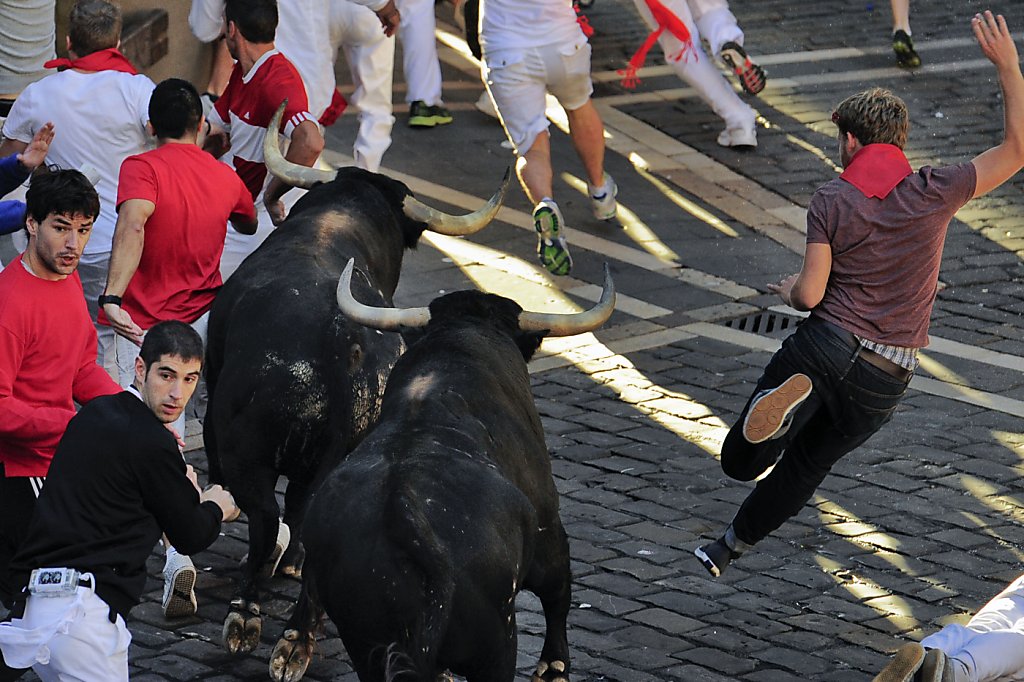
Can you train for the bull run?
Nothing can fully prepare you for the experience of running with bulls, but you can absolutely train for the bull run before arriving in Pamplona. If you plan on running, buy a great pair of running shoes, and get ready to practice your sprints. The bull run is not a test of endurance: it is a test of speed. To keep up with the bulls for a realistic section of the route, you'll need to practice sprinting until you're consistently accelerating into running at roughly 24km/h within around 10 seconds and holding that pace for around 15 seconds. You'll need to start running several seconds before the bulls are near you to reach your peak sprint by the time the bulls catch up to you. Analyze videos of bull runs online to see how the best runners make it happen.
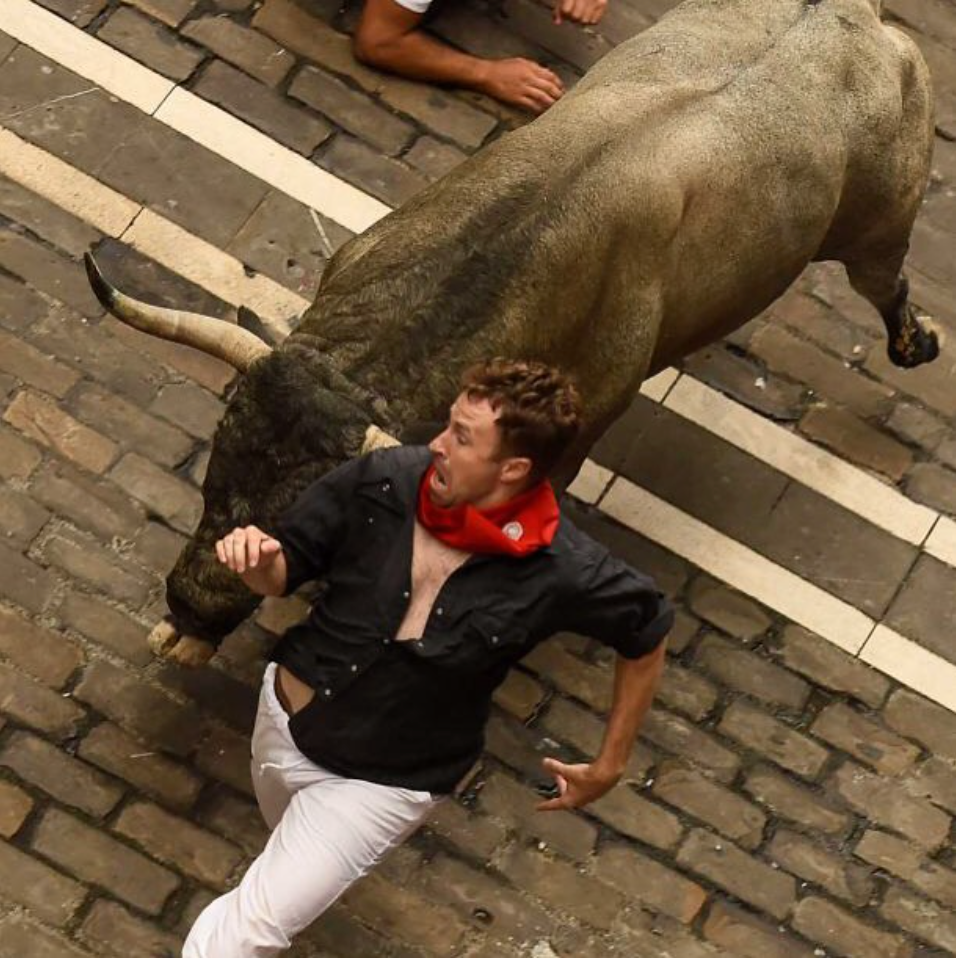
Learn from an Expert
To be best prepared for the bull run, sign up for a walking tour with bull runner Dennis Clancey, who has two decades of experience running with the bulls in Pamplona. He'll walk with you in a small group down the entire bull run course, pointing out dangers along the route and teaching you how to identify and escape dangerous situations.
